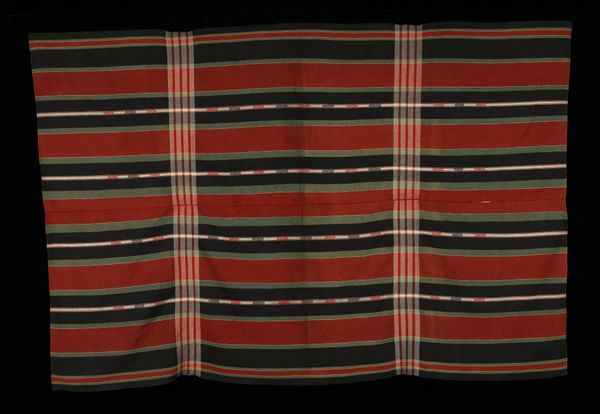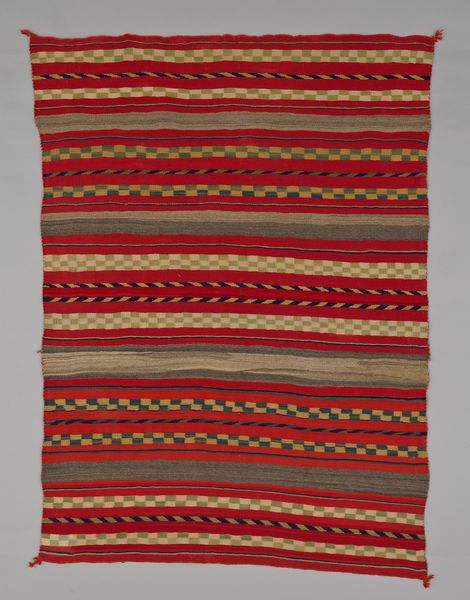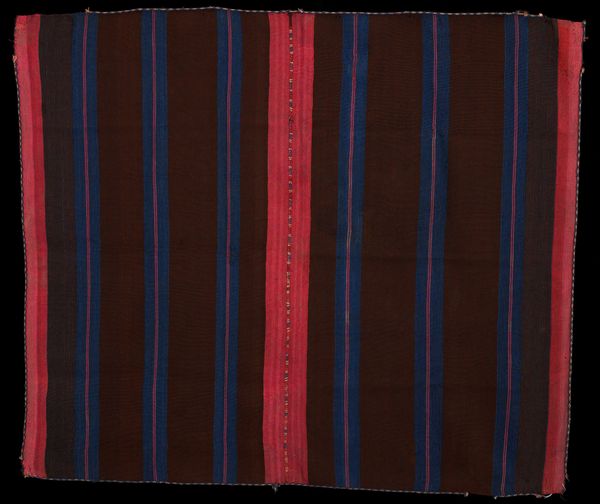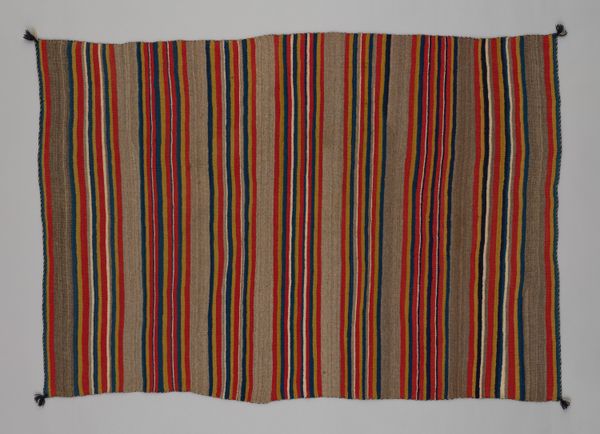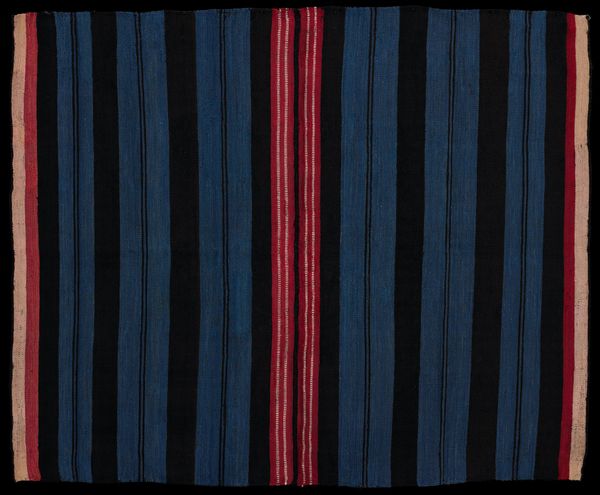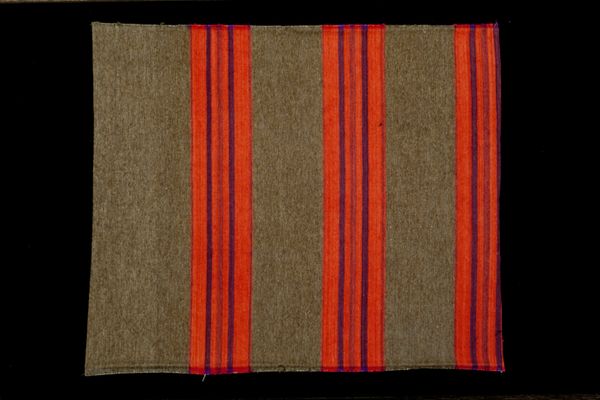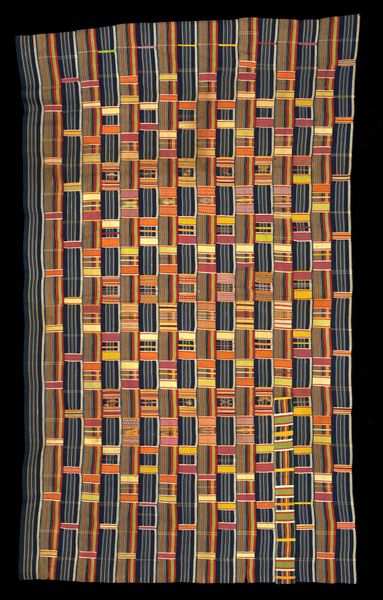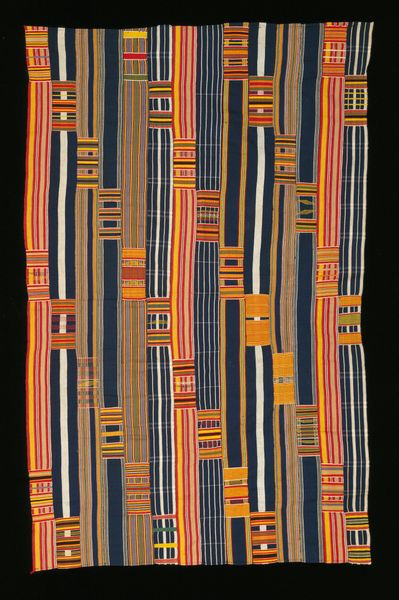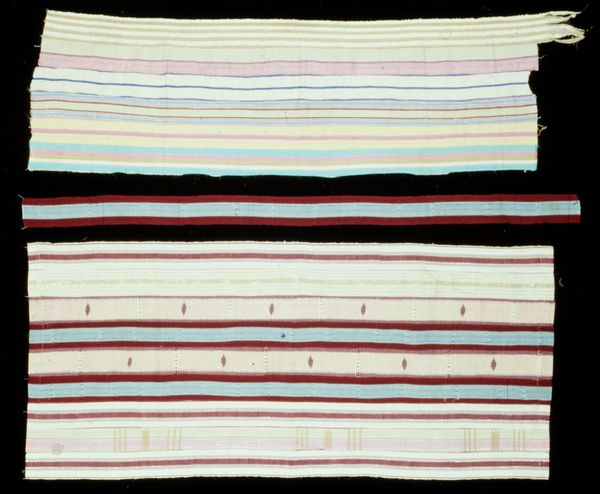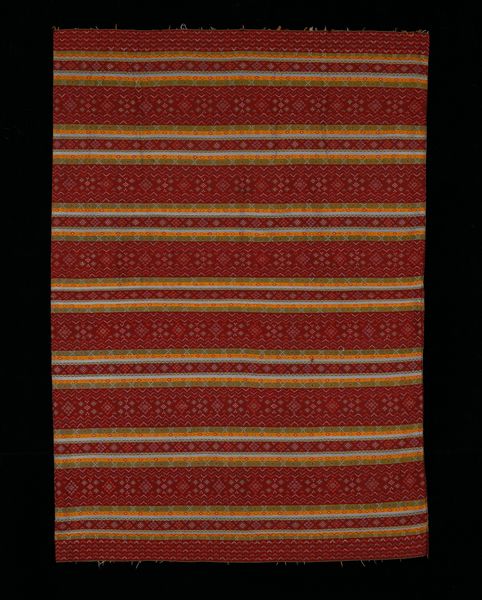
fibre-art, weaving, textile
#
pattern heavy
#
fibre-art
#
weaving
#
textile
#
fashion and textile design
#
hand-embroidered
#
pattern design
#
geometric
#
fabric design
#
repetition of pattern
#
pattern repetition
#
textile design
#
imprinted textile
#
layered pattern
Dimensions: 34 1/4 x 37 5/8 in. (87 x 95.56 cm)
Copyright: Public Domain
Curator: This is an exquisite textile work titled "Skirt," believed to have been created in the 20th century. It now resides in the collection of the Minneapolis Institute of Art. Editor: It’s rather mesmerizing! The interplay of colors and the unwavering horizontal lines…it creates a stunning visual rhythm. A bold, vibrant piece! Curator: Indeed. The formal construction relies heavily on pattern and repetition. Notice the hand-embroidered bands and layered patterns, which really highlight the intricate structure and precise execution of its design. Editor: Precisely! The repetition lends it a certain symbolic weight. Think about textiles historically, as markers of identity, of social status… perhaps even narratives woven into the fabric itself. What stories might these geometric shapes tell? Curator: The material itself – a blend of silk and wool fibres – is quite noteworthy, lending the skirt a textural richness that engages the viewer. Also, these geometric abstractions move into non-verbal semiotics that offer its user, if worn, membership within a broader framework of material culture. Editor: Right, color choices always say something, and they create meaning. I'm also curious, what about the intended wearer? Can this weaving give a unique indication of gender? Are there archetypes implied in this construction? Or an indication of their community of origin? Curator: Intriguing questions. From a purely formal standpoint, it's fascinating to observe the slightly imperfect execution—those tiny shifts in alignment, adding depth, preventing the geometry from becoming cold or sterile. It shows the "hand" of its creator. Editor: And the repairs! These imperfections enhance it—suggesting use, age, perhaps a cherished object worn for celebration or important rituals. The symbolism then isn't purely visual, it is embodied and lived. Curator: An excellent point. By moving beyond surface appearances and considering the work in the expanded field of personal and collective history, we start to perceive how even in these relatively muted primary hues, patterns connect the concrete, personal, object to culture at large. Editor: Absolutely. It ceases to be simply fabric and line; it’s infused with possible histories, individual and shared. These visual signs ask us to look beyond what's presented in our immediate field of vision, and that is powerful in such a small object.
Comments
No comments
Be the first to comment and join the conversation on the ultimate creative platform.
